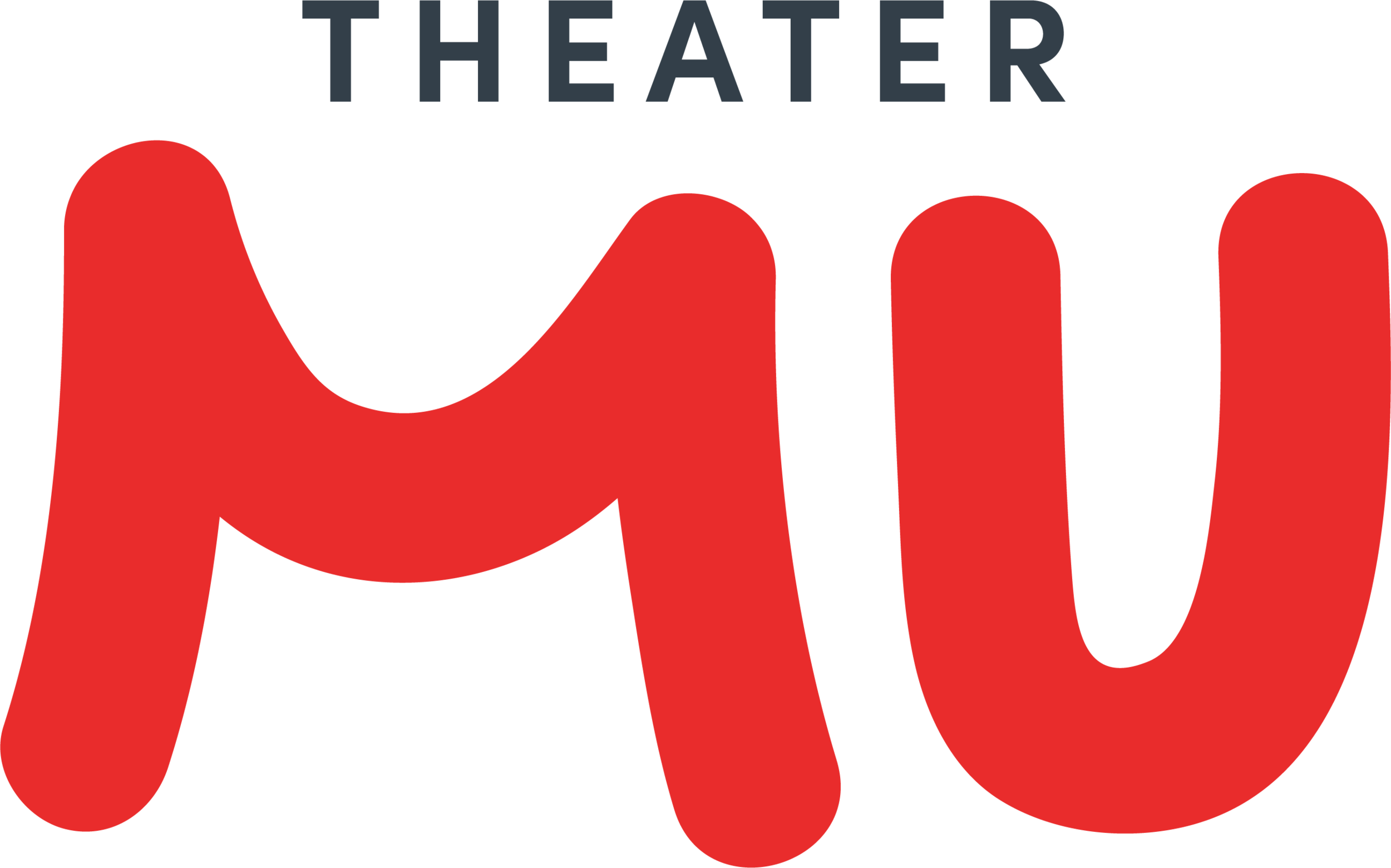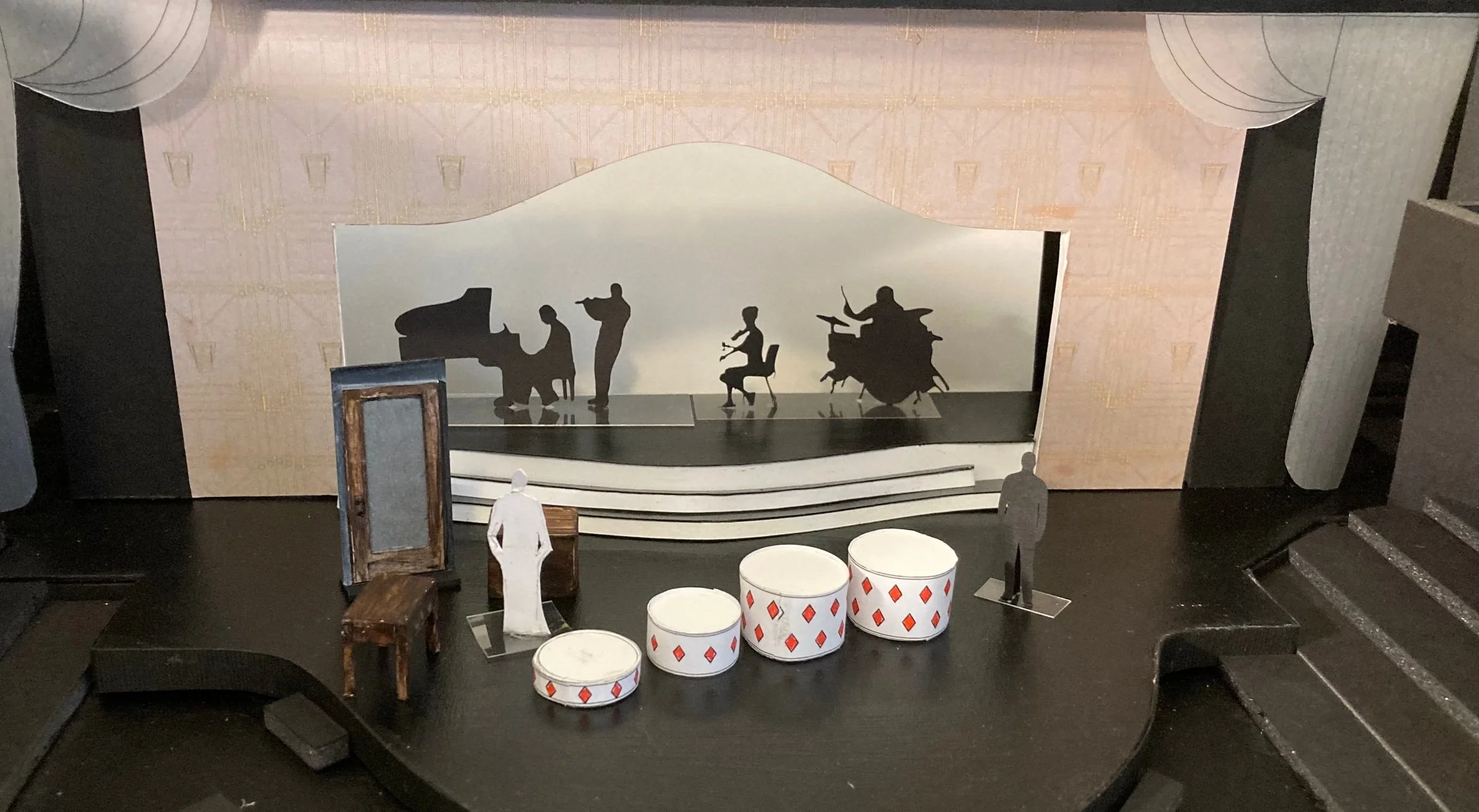Q&A with BLENDED 和 (HARMONY) scenic designer Mina Kinukawa
Picture this: It’s on the cusp between the roaring twenties and the swing era, and America is in love with celebrities such as Fred Astaire, Josephine Baker, and Lester Allen. Amongst the buzzing air of music and dance, a young Chinese Polish American family performs on stages throughout the Twin Cities. This act will eventually rise to fame as the Kim Loo Sisters, a vocal quartet taking their singing prowess from the Midwest all the way to Broadway, the Hollywood silver screen, and across the world.
This May, the Kim Loo Sisters are coming home. Created by Jessica Huang and Jacinth Greywoode, Blended 和 (Harmony): The Kim Loo Sisters brings the sisters’ story to the stage through a world premiere directed by Mu artistic director Lily Tung Crystal, running May 4-26. To better illustrate this glittering time of feverish jazz and electric swing, scenic designer Mina Kinukawa takes us through her process of making the Kim Loo Sisters’ world come to life in this world premiere co-produced by History Theatre and Theater Mu.
Blended 和 (Harmony): The Kim Loo Sisters is based on a true story. What kind of research did you have to do when creating your designs to best reflect the times in which this story took place?
Research is always important when designing (and I really enjoy researching!). With KLS [The Kim Loo Sisters], it was especially important to me to research not only historical background, as it covers both the US and China and their very complex political contexts, but also respect the KLS' storytelling and its magic. It's been very interesting to research period architecture and details in Beijing, and US theater venues where the sisters performed. Those grand stages and performances compared with the hustles and bustles of the garment district that supported the industry, create multilayered storytelling and complexity of the characters.
Was there anything you took direct inspiration from when coming up with your designs?
The gates in Beijing. The styles, the location, the directions of buildings, etc., indicated wealth and status of the owner of the property. Especially because we don't see the entirety of the buildings, it was important to me that it was visually representing the story correctly.
Which part of the designing process made you most excited?
Imagining the characters move in the space I designed is always exciting. … [Lighting director] Mags [Scanlon] shared her ideas about the lanterns, the shadow/silhouettes effects, etc., and I could envision what those lighting could make the set look in certain ways. It's so exciting to exchange ideas and how that can transform what I designed.
What were some of your favorite design choices made for this production and why?
We have to see how it looks at the end (haha) but designing the "grand" staircase surrounded by the art deco patterned false proscenium was fun. The musicians are on stage and center stage! I wanted to add the period details so as soon as the audience walked into the house, they could experience the period.
What is the process of working with the director and the other designers? How does this collaboration affect the end result vs the initial models?
As the scenic designer, I am often the first to start the conversation with the director. I truly enjoy collaborating with other artists and designers and enjoy seeing how everyone's design and ideas transform throughout the process. My model and design is finished, [but] we might still be talking about projections and how to make the images work. Rehearsal can bring discoveries that affect the design. So even after my designs are technically "finished," I make adjustments so that it works for the show. The end product, the show, is where we see everyone's visions work together.
This interview has been edited for clarity, length, and style. See Blended 和 (Harmony): The Kim Loo Sisters from May 4-26. Select performances offer accessibility services of supertitle captions, ASL interpretation, or audio description. Use discount code MU23-24 to access tickets starting at $15.

